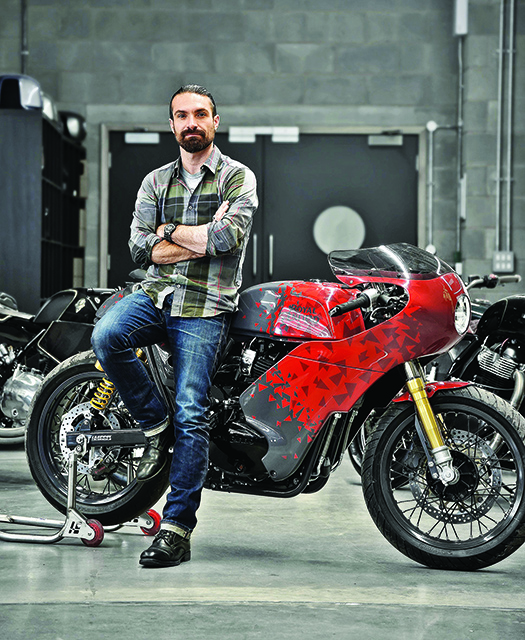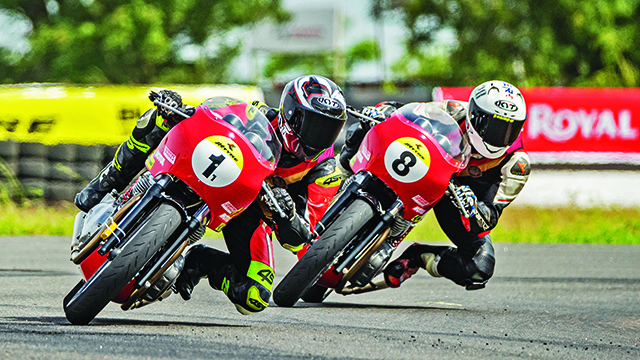We speak to Adrian Sellers, Head of Custom Program & Motorsport, Industrial Design Department, Royal Enfield, about the Continental GT Cup

Bike India (BI ): What are the top three moments that come to mind when you think about Royal Enfield in motor sport?
Adrian Sellers (AS): You have got the racers in India who have made history on Royal Enfields; “Bullet” Bose comes to mind. Earlier in Royal Enfield’s history, in the 1950s and ‘60s, there were Trials and Hare Scrambles which eventually led to the development of the swinging arm, suspension, and so on. Also, in the US they have been active in off-roading. I don’t think Royal Enfield have focused on one thing exclusively from a factory perspective, but our bikes have always been used in some form of motor sport. That varied history is something that we have tried to keep going in our modern motor sport effort as well.
What was the concept behind the Royal Enfield GT Cup and has it lived up to your expectations?
The concept was to make it possible for anybody to race. To open up a motor sport experience and the opportunity to be a hero to anybody with the skills to do so. Quite often with road racing, it can be difficult to join because of the expense, effort, time, and commitment needed to do it. We wanted to eliminate all those barriers for aspiring racers. You can sign up, try it out, and, if you pass the criteria, it is up to your skill at the point to land a seat for racing. In offering it to people, it is an extension of our broader brand ethos of aspiration and accessibility. Facilitating people to get out there on track and race even if they may not have been able to do so before. That is of immense value and satisfaction to us as a brand.
What changes had to be made to convert the stock Continental GT 650 into the GT-R650?
It was pretty easy because we did not want to change anything fundamental in the Continental GT. It was already designed to be an excellent road bike. Our testing team spent quite a few years getting that dialled in. The changes that have been applied to it have been applied for the track because that is a very specific environment, a very harsh environment where all the forces on the bike are amplified. Suspension, exhausts, lowered clip-ons, rear-sets, and so on are really the extent of the modification. Did not really need to make any changes to the motor itself because it is a spec series and all the bikes need to be identical.

What is the feedback that you have received from the racers?
Oh, that has been great so far. Obviously, they are happy to be able to get a ride as is any racer. You are just happy to get a race bike to race on. The feedback has been great.
What are your thoughts about the Pro-Am format in the current season of the GT Cup?
It is great. From a story-telling perspective and an entertainment perspective, it is offering a whole lot of opportunities. Just watching the amateurs get up there and perform as well as the pros is a great story of aspiration. It is possible for somebody who does not have that much of racing experience to show just how good they are. That, for me, gets to the heart of what the GT Cup is. It speaks louder than words.
Will the Continental GT Cup make its way to other countries where Royal Enfield have a presence?
We certainly hope to. The approach that we take to all of these activities is to offer them to the greatest number of people. As Royal Enfield expand globally, it logically follows that we will try to offer it in other markets as well. Obviously, that depends on finding appropriate partners like we found JK Tyre in India to help run it. So, yes, there is certainly the intention to do so and we hope to realise that in the coming years.
What is next for Royal Enfield in terms of motor sport?
We have spent the last couple of years initiating our modern push into motor sport, starting with Slide School, flat-track racing, road racing in the US with our GTR programme, and the GT Cup in India. We are looking at taking our learnings and making the racing more exciting, opening it up to more people and to grow these programmes.


Leave a Reply